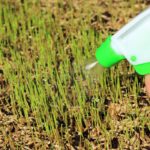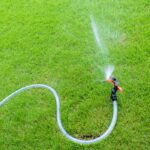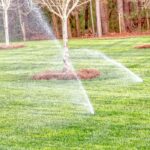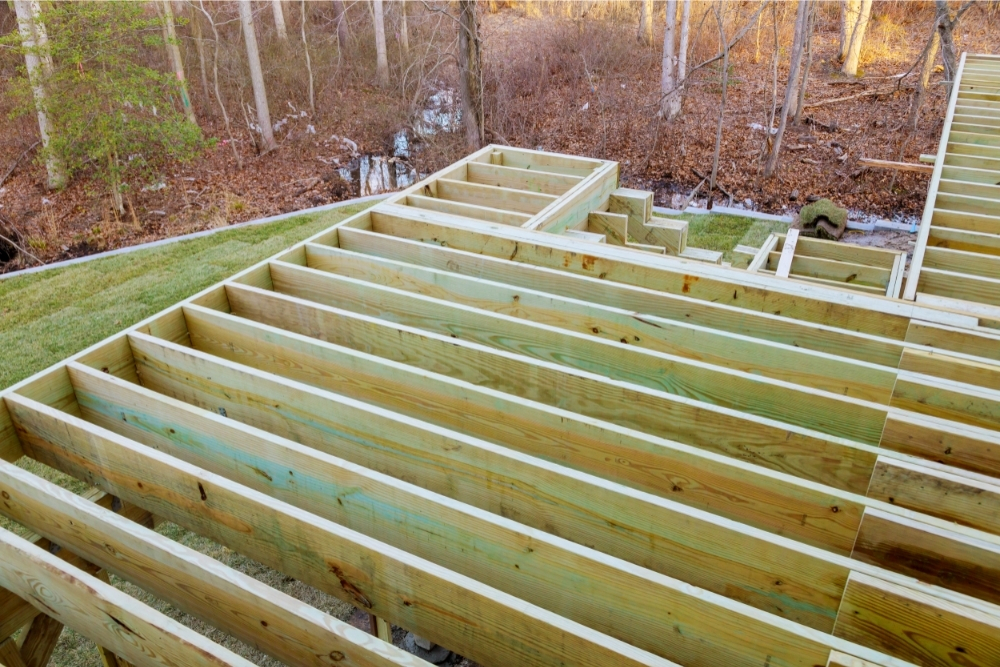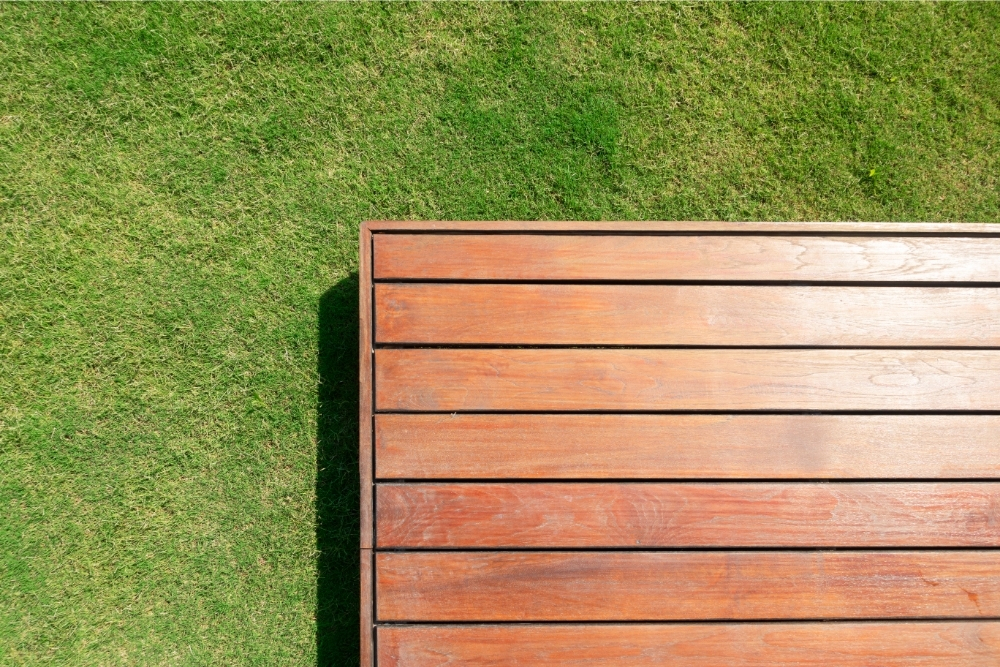Grass is generally one of the easiest plants to grow, and it can survive in harsh conditions where most other plants would struggle. However, growing healthy grass takes more than spreading some seeds and hoping for the best. Watering is one of the most crucial aspects of grass care.
Water your grass seed 2-3 times per day for 5-10 minutes after planting. Once the grass has germinated, water for a longer period once per day. Decrease the watering frequency to once or twice weekly after the blades grow to one inch tall, and avoid watering for 2 days after significant rainfall.
Although growing grass takes hard work and patience, having a well-manicured lawn with established and healthy grass can be very rewarding. If you’re ready to take on this task but aren’t sure where to begin, explore these helpful tips for watering new grass seeds. We’ll take a look at everything you need to know.
When Should You Water New Grass Seed?
Grass seeds need water immediately after planting. Newly planted grass seeds thrive in moist soil, but the planting material must not be soggy. Set your automated sprinkler system (on Amazon) for 5-10 minutes in the early morning and at mid-day.
Don’t wait until the soil has thoroughly dried out because most of the seed will have germinated. You can avoid wilting grass by watering your new grass seed when the top inch or two of the soil is still damp.
How Long Should You Water New Grass Seed?
The new grass seed’s water requirements depend on the grass type and your environment. Climate zone and soil type will also affect the amount of water needed.
Germination Period
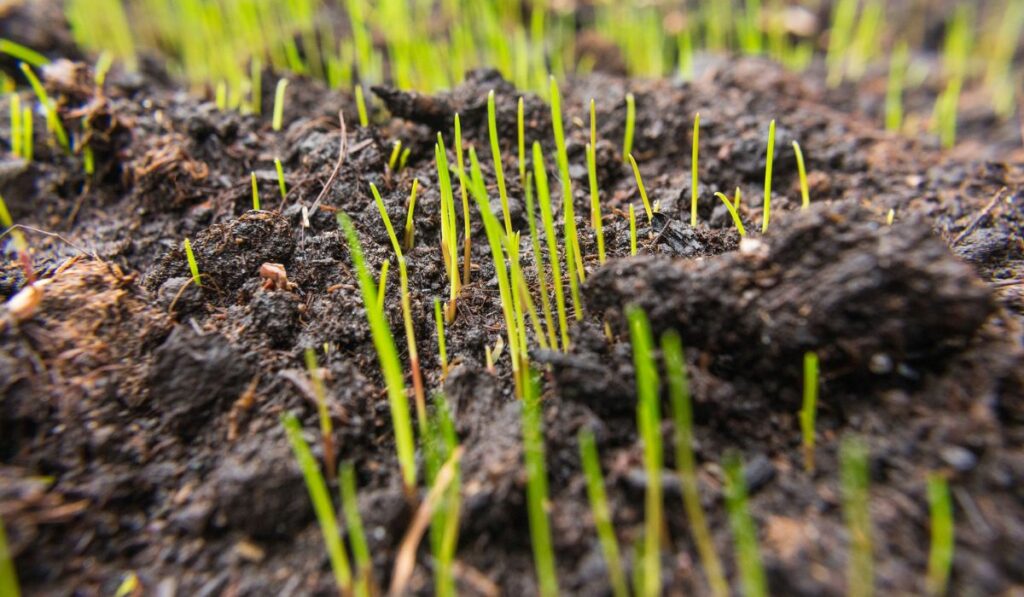
During germination, water your grass 2 to 3 times daily. This helps the seedlings to grow and develop roots. It also helps them get established in the soil. Water new grass seeds when they’re still covered with soil to ensure the roots absorb more moisture and flourish.
Watering Duration
Water grass seed for 5 to 10 minutes each time. Watering longer than this can cause the seeds to rot. However, failure to provide enough water can weaken the new grass, making it difficult to establish itself in the ground.
This is especially important if your lawn is in a windy area or a location with high foot traffic, such as sidewalks and driveways. Excess water causes the grass to become compacted, making it more challenging for the roots to absorb water and nutrients from the soil.
Watering Techniques
The best way to water newly planted grass is with a slow-running drip or sprinkler system (on Amazon). This method allows you to water the lawn when it needs it the most. It also enables you to adjust the amount of water delivered at any given time, preventing overwatering and promoting root health.
How to Prevent Overwatering the Lawn
Overwatering is one of the most common mistakes made by first-time lawn owners. It leads to several problems, including:
- Slow lawn growth rate
- Low-quality grass
- Death of the lawn
- Fungus and disease
- Poor nutrient absorption
One of the easiest ways to prevent overwatering is using horticultural grit, such as sand or composted peat moss. This will help keep the soil moist while preventing waterlogging.
Should You Ever Stop Watering Grass?
Never stop watering your grass. All plants need water to survive. However, you can reduce the watering frequency for your grass when the grass blades are an inch tall. Less watering durations will allow maximum water absorption and nutrients from the soil, which will help your lawn grow healthy and strong.
Watering your grass once or twice a week can be sufficient depending on location, species, and climate. But you’ll have to re-seed your yard if you don’t water the grass frequently.
What Happens if You Don’t Water Your Seedlings?
If you don’t water your seedlings, they will wither and dry up. This is because the plant’s natural moisture balance is disrupted, and the roots can’t absorb enough water. Because of this imbalance, the leaves wilt and turn yellow or brown as they lose their ability to photosynthesize.
The stems also begin shriveling as they don’t have enough energy to keep growing. When this happens to your plants often, they may die altogether. Consider adding mulch, like pine needles or leaves, to the soil around the base of your grass to reduce water evaporation during the hot summer months.
How Long Should You Wait to Water Your Grass After It Has Rained?
Giving your lawn time to recover after a good rain is essential to avoid overwatering. Wait at least two days after a downpour so the rainwater can get absorbed or evaporated. If you water too soon, the grass may endure flood stress, which can cause root rot.
Can You Speed up the Germination Process for New Grass Seeds?
The germination period is different for each planting season. During cool seasons, the grass can take about one week to germinate. On the other hand, if you’re planting in the warm season or summer, the grass can take 2 to 3 weeks to germinate. So how do you speed up the growth process? Here are some tips on how to make your lawn grow faster.
1. Buy Coated Seeds
Coated seeds (on Amazon) retain more water, giving them a better opportunity to sprout and grow faster. You can get these seeds at garden stores or online. Once you have your seeds, soak them in water overnight or longer. This will help them germinate faster because they will absorb water more quickly and be able to grow quicker.
2. Prepare the Soil
Loosen the top two inches of your soil and moisten the soil to facilitate water penetration. Add compost or manure that is rich in nitrogen and potassium. A balanced blend of organic materials will help boost the nutrient content of your soil, which can help improve germination.
3. Plant the Grass When the Temperature Is Right
The best time of day to plant grass is when the soil temperature is between 65 and 75 degrees Fahrenheit. This is the optimal temperature range for healthy grass growth.
4. Don’t Bury the Grass Seeds
Burying grass seeds slows down their growth and makes it difficult for the seedlings to emerge from the soil. Instead, spread the seeds out on top of the soil so that they get enough sunlight and moisture.
Watering Tips and Tricks
If you’ve just planted your seeds and are wondering how to water them, these tips and tricks will help you.
Cover Your Seeds with Mulch
Mulch helps retain moisture in the soil so that it doesn’t run off and cause damage to your new grass seedlings. It prevents soil from drying out too quickly after watering to save resources.
Look Out for Moss and Algae
If you see moss or algae, then you’re probably overwatering. Overwatering is the main reason for poor germination and grass seed performance. Reduce this by watering once daily, keeping the soil moist but not soaking wet. Avoid standing water in the area where you planted your grass seed.
Opt for High-Quality Sprinklers
When buying a new sprinkler, go for a quality brand that has been around for a while. Cheap sprinklers don’t distribute water well and can cause damage to your lawn. When watering lawns, use low-pressure sprayers (on Amazon) because high pressure might strain the plants.
Watering your grass every day when it’s young is the best way of ensuring that it proliferates and stays healthy. While you might have to give up an hour of your time in the evening, it’ll be worth it if your lawn looks fantastic and can take care of itself in the future.

